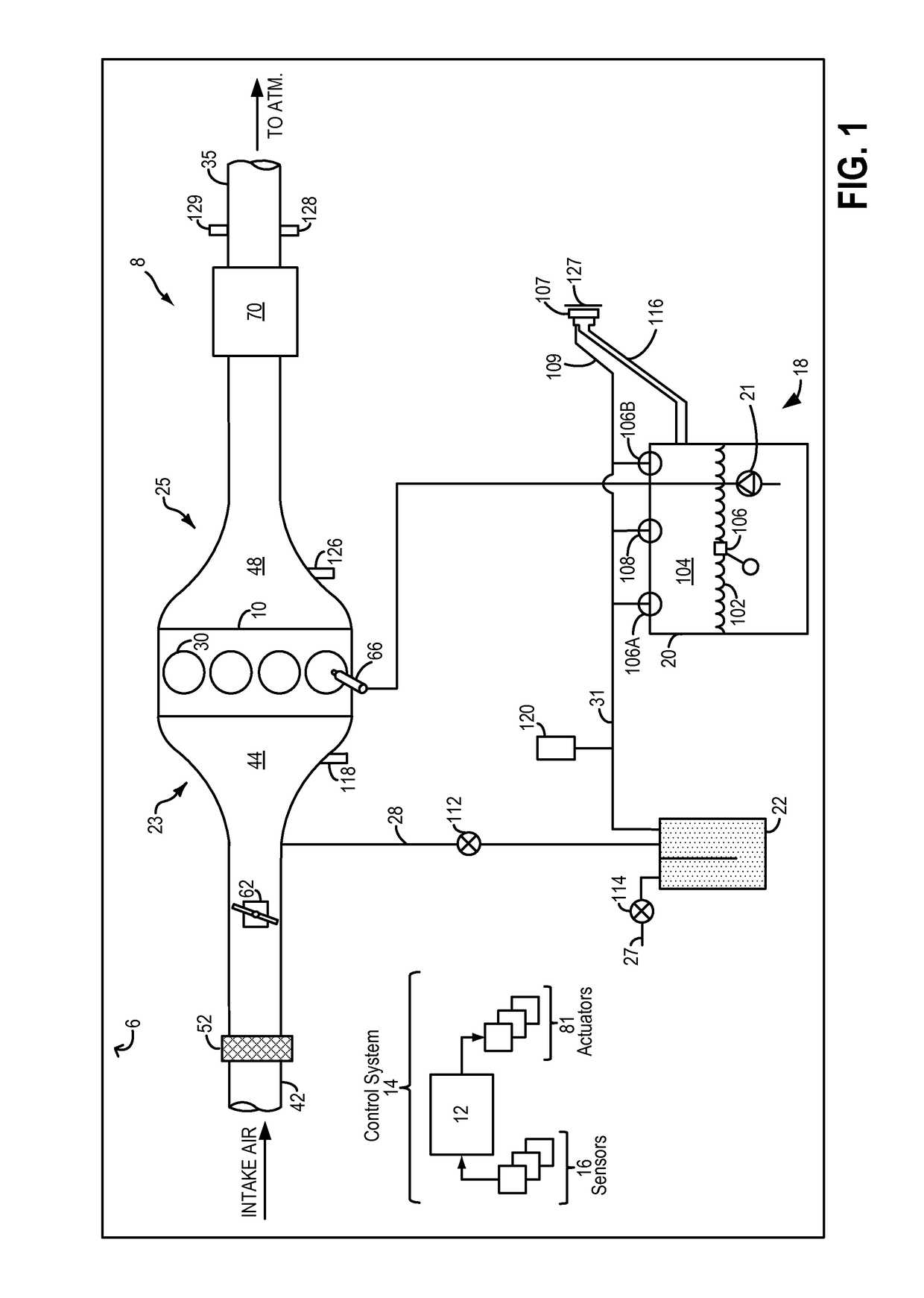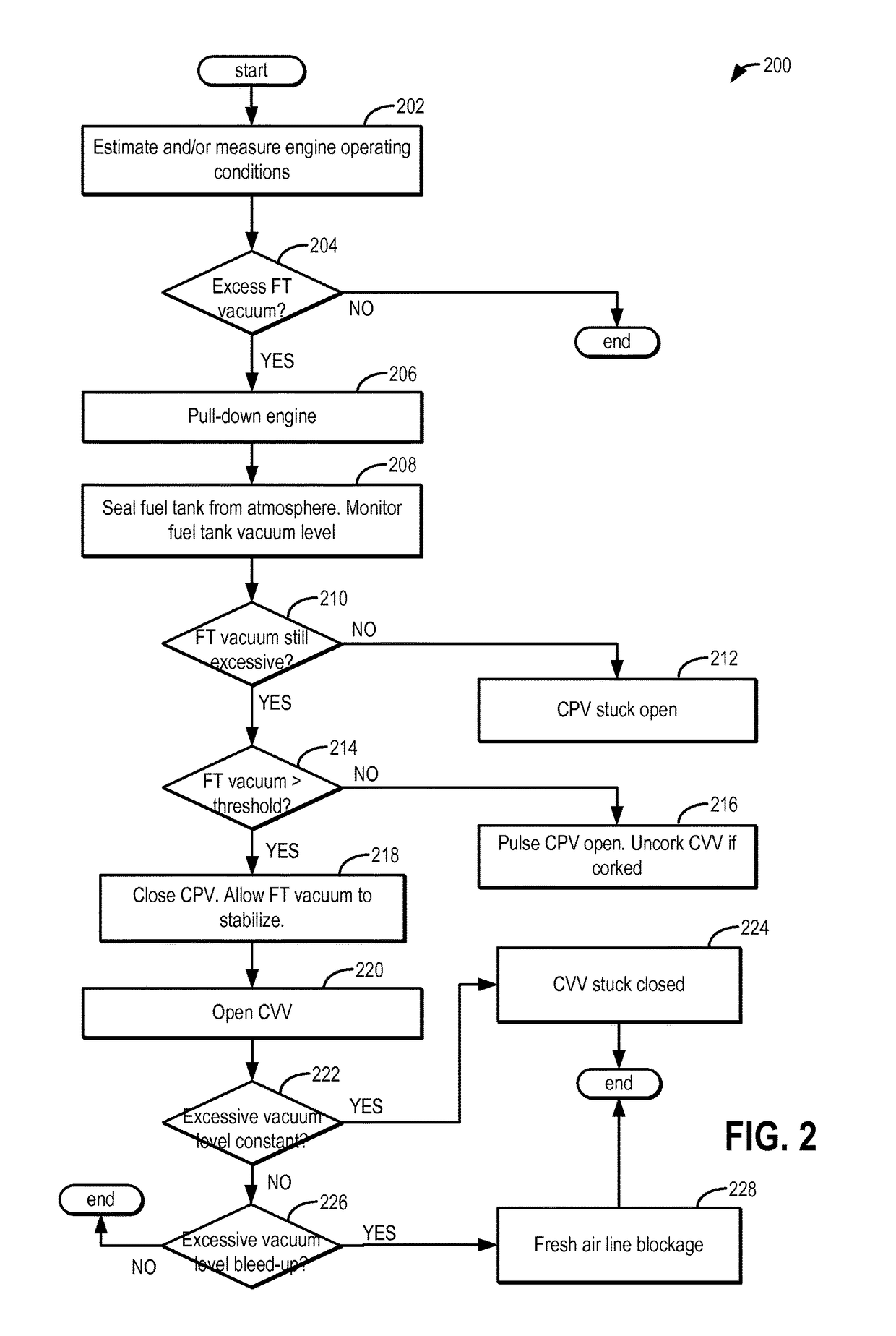Fuel system diagnostics
a fuel system and diagnostic technology, applied in the direction of machine/engine, non-fuel substance addition to fuel, charge feed system, etc., can solve the problem that the approach of otsuka and machida may not accurately distinguish the elevated fuel tank vacuum level caused by elevated fuel tank vacuum level, corrupt degradation detection, etc., to reduce the release of fuel vapors
- Summary
- Abstract
- Description
- Claims
- Application Information
AI Technical Summary
Benefits of technology
Problems solved by technology
Method used
Image
Examples
Embodiment Construction
[0013]Methods and systems are provided for identifying degradation in a fuel system coupled to a vehicle engine, such as the fuel system of FIG. 1. A diagnostic routine may be performed in response to the detection of elevated fuel tank vacuum levels. A controller may be configured to perform a control routine, such as the example routine of FIG. 2, to seal the fuel tank following an engine pull-down if elevated fuel tank vacuum is detected. The controller then identifies and distinguishes canister vent valve degradation from canister purge valve degradation based on changes in the fuel tank vacuum following the sealing. An example diagnostic test is shown at FIG. 3. In this way, accuracy of fuel system degradation detection is improved.
[0014]FIG. 1 shows a schematic depiction of a hybrid vehicle system 6 that can derive propulsion power from engine system 8 and / or an on-board energy storage device (not shown), such as a battery system. An energy conversion device, such as a generat...
PUM
 Login to View More
Login to View More Abstract
Description
Claims
Application Information
 Login to View More
Login to View More - R&D
- Intellectual Property
- Life Sciences
- Materials
- Tech Scout
- Unparalleled Data Quality
- Higher Quality Content
- 60% Fewer Hallucinations
Browse by: Latest US Patents, China's latest patents, Technical Efficacy Thesaurus, Application Domain, Technology Topic, Popular Technical Reports.
© 2025 PatSnap. All rights reserved.Legal|Privacy policy|Modern Slavery Act Transparency Statement|Sitemap|About US| Contact US: help@patsnap.com



